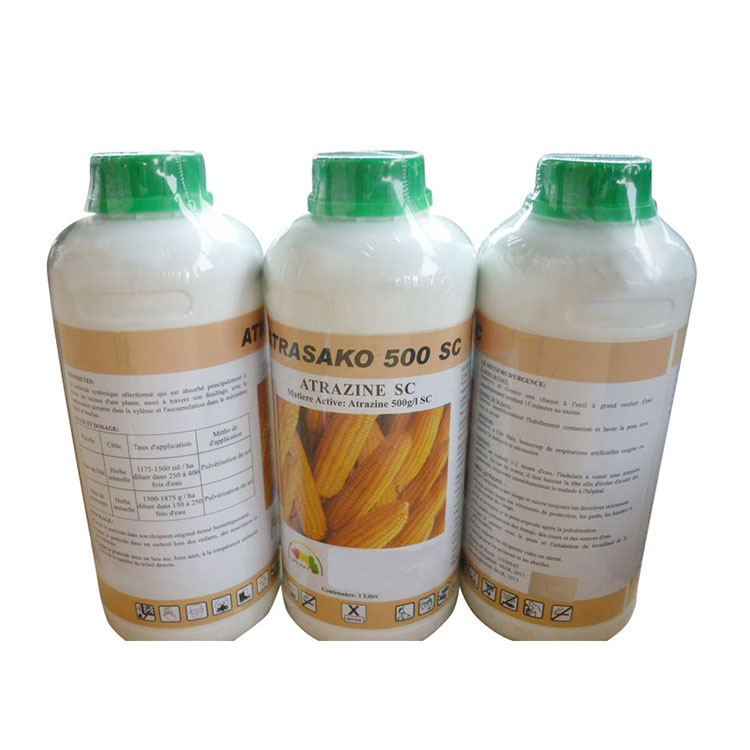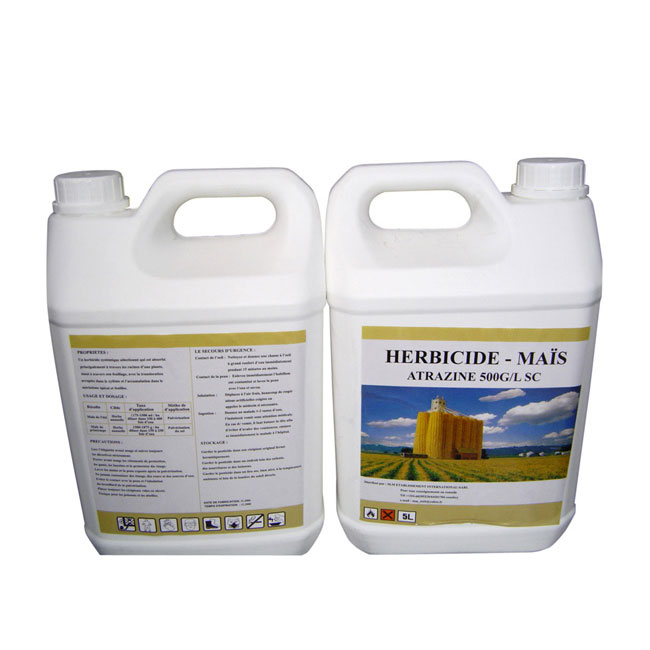Atrazine 500g/l SC Herbicide Agrochemical 50%SC Atrazine Organic Weedicide
Applications:
Atrazine Mode of action Selective systemic herbicide, absorbed principally through the roots, but also through the foliage, with translocation acropetally in the xylem and accumulation in the apical meristems and leaves. Atrazine Uses Pre- and post-emergence control of annual broad-leaved weeds and annual grasses in maize, sorghum, sugar cane, pineapples, chemical fallow, grassland, macadamia nuts, conifers, industrial weed control. In Europe, use is concentrated in maize and sorghum at £1.5 kg/ha. Used also in combinations with many other herbicides. Phytotoxicity Phytotoxic to many crops, including most vegetables, potatoes, soya beans, and peanuts. Atrazine
Toxicology:
Oral Acute oral LD50 for rats 1869-3090 mg tech./kg, mice >1332-3992 mg/kg.
Skin and eye Acute percutaneous LD50 for rats >3100 mg/kg. Mild skin irritant; non-irritating to eyes (rabbits). Skin sensitiser in guinea pigs, but not in humans.
Inhalation LC50 (4 h) for rats >5.8 mg/l air.
NOEL (2 y) for rats 10 mg/kg diet (0.5 mg/kg daily), for dogs 150 mg/kg diet (3.75 mg/kg daily), for mice 10 mg/kg diet (1.4 mg/kg daily).
ADI 0.005 mg/kg b.w.
Water GV 2 mg/l (TDI 0.5 mg/kg b.w.).
Toxicity class WHO (a.i.) U; EPA (formulation) III



